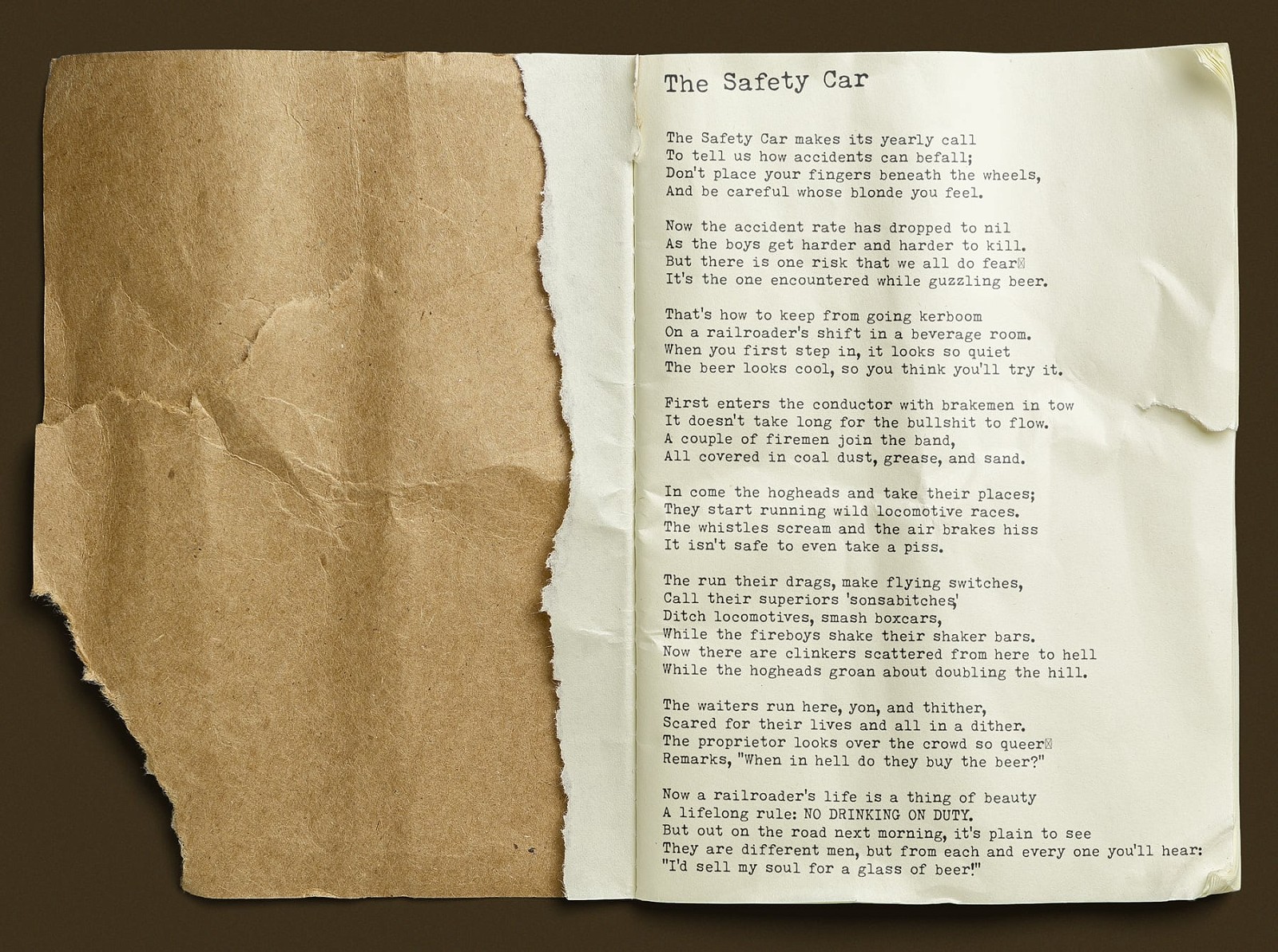Safety First and Other Stories
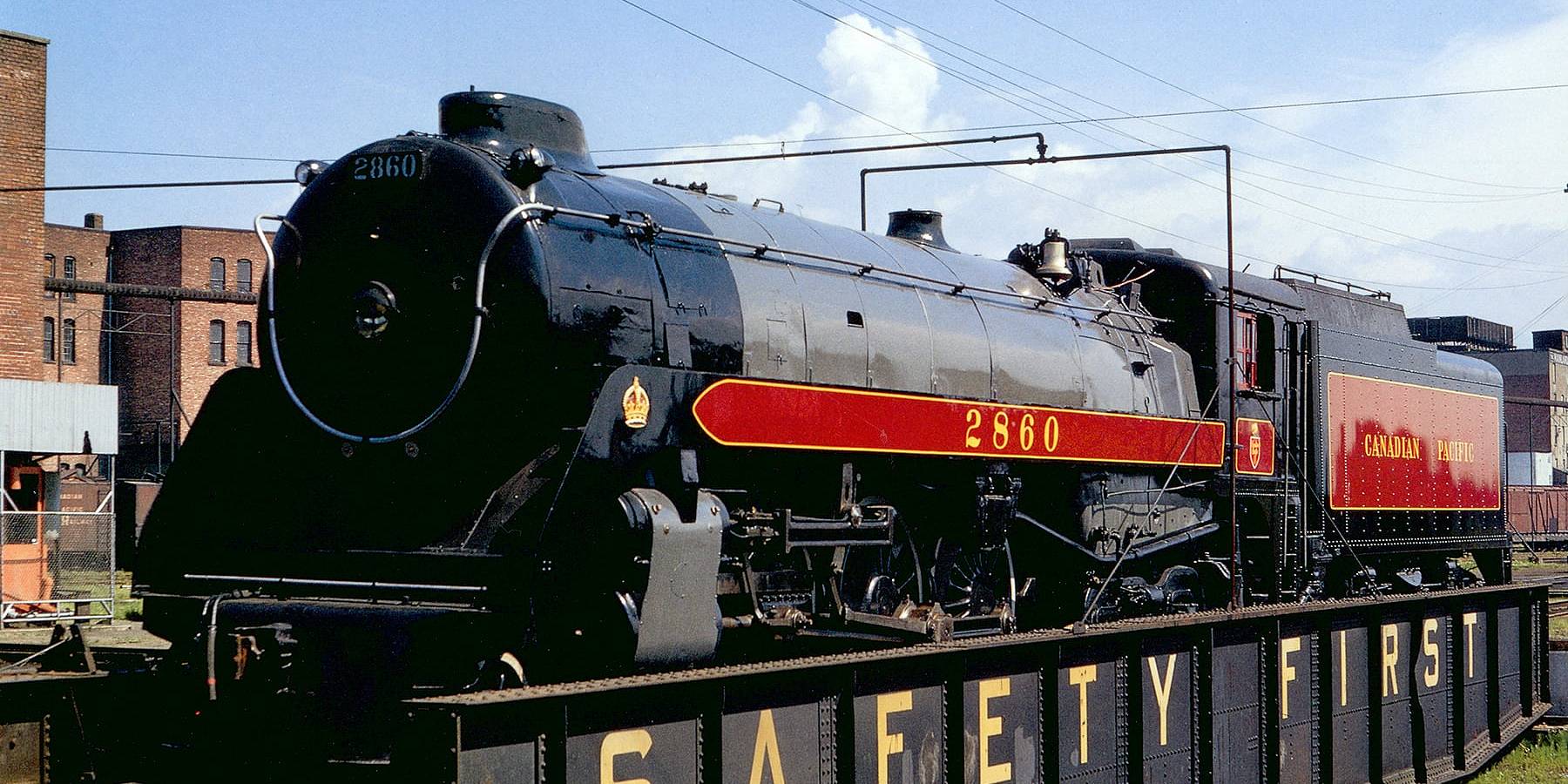

My locomotive engineer father collected the following poem during his tenure with the CPR—long before the days of radio and computerized communications. It may even date back to before the Teletype machine and advent of diesel locomotives. The poet, almost certainly a man, is long forgotten.
Given its references to the steam era, the poem must be at least 70 years old, from a time before political correctness. Readers might overlook those outdated references, as it simply reflects railway culture of that time. Back then “beer parlours” were separated into sections called ‘Gentlemen’ and ‘Ladies & Escorts’, and some bars were considered unsuitable for ladies.
Readers might overlook those outdated references, as it simply reflects railway culture of that time.
Similar to how internet jokes or memes are shared today, railway staff once circulated doggerel and drawings by mimeograph and company mail service.
This poem survived in my personal collection for decades as I always found it amusing. It reminds me of my father, who liked railroading, beer, and storytelling—common forms of crew entertainment in his era.
Safety cars were an early approach to accident prevention education. These were old coaches converted to travelling classrooms which moved on a schedule to train new employees or those who had amassed too many brownie points. Later on, other cars came into use, including those specializing in eye and hearing tests, rules instruction, etc.
The Safety Car
The Safety Car makes its yearly call
To tell us how accidents can befall;
Don’t place your fingers beneath the wheels,
And be careful whose blonde you feel.
Now the accident rate has dropped to nil
As the boys get harder and harder to kill.
But there is one risk that we all do fear—
It’s the one encountered while guzzling beer.
That’s how to keep from going kerboom
On a railroader’s shift in a beverage room.
When you first step in, it looks so quiet
The beer looks cool, so you think you’ll try it.
First enters the conductor with brakemen in tow
It doesn’t take long for the bullshit to flow.
A couple of firemen join the band,
All covered in coal dust, grease, and sand.
In come the hogheads and take their places;
They start running wild locomotive races.
The whistles scream and the air brakes hiss
It isn’t safe to even take a piss.
The run their drags, make flying switches,
Call their superiors ‘sonsabitches’,
Ditch locomotives, smash boxcars,
While the fireboys shake their shaker bars.
Now there are clinkers scattered from here to hell
While the hogheads groan about doubling the hill.
The waiters run here, yon, and thither,
Scared for their lives and all in a dither.
The proprietor looks over the crowd so queer—
Remarks, “When in hell do they buy the beer?”
Now a railroader’s life is a thing of beauty
A lifelong rule: NO DRINKING ON DUTY.
But out on the road next morning, it’s plain to see
They are different men, but from each and every one you’ll hear:
“I’d sell my soul for a glass of beer!”
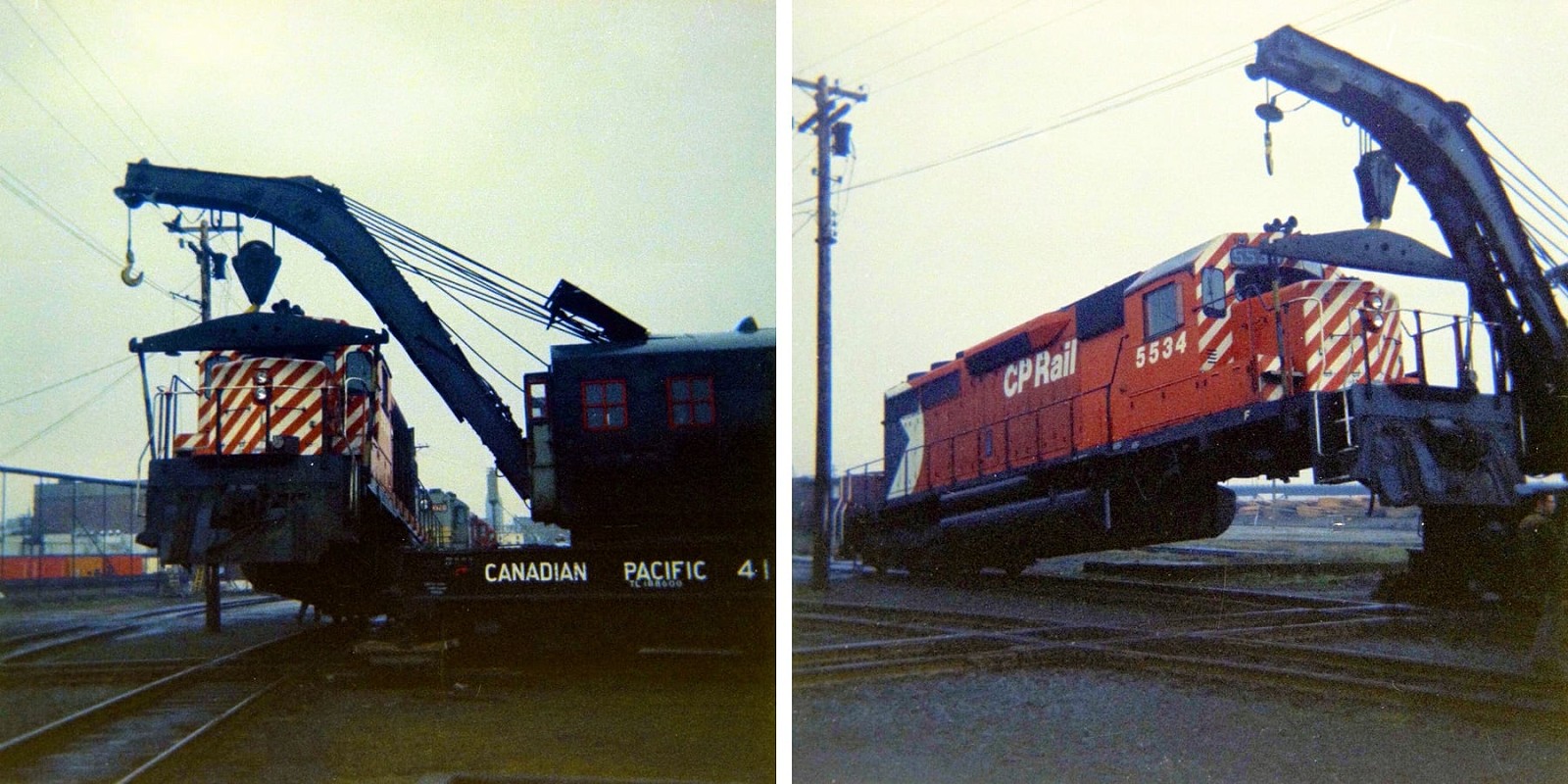
Proving the old axiom, ‘Necessity is the mother of invention’, CP 5534 lifted by steam crane CP 414330, Drake Street Shops, Vancouver, BC, November 1973. The purpose was to repair the leading truck. Photo © Andy Cassidy.
Tales the Boys Tell
Sometimes a few of us would gather in a beer parlour, let's say The Regent, and the game was that if you mentioned the railway, you had to buy the next round. The King Eddy, the Revelstoke, the Regent, and the Legion were our social meeting places, I had a room at the Regent and ate at Lena's Restaurant.
The last trip before payday I sometimes had to borrow 10 bucks from Mull at Mull's poolroom, so I could eat on the road, and would pay Mull back $12 on payday. Our bachelor life was the beer parlour, the poolroom, and the Avalon Theatre.
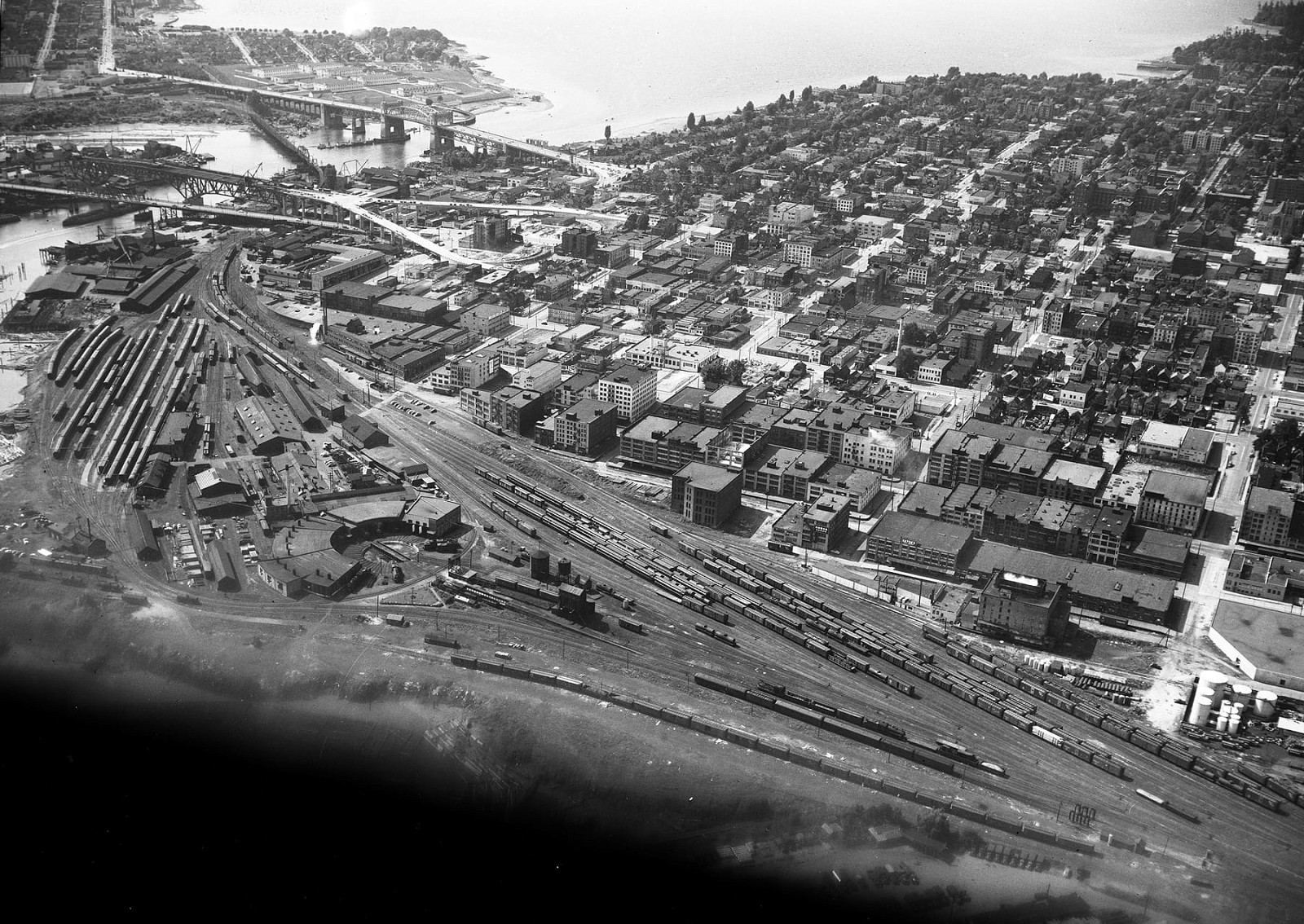
This aerial view of Vancouver’s False Creek and CPR yards was taken in 1953 by a photographer for The Province newspaper. All the motive power showing is steam. The entire rail facility in the foreground has since been revamped; first for Expo ’86, then by modern development. A remnant of the old roundhouse continues to exist as a community arts and recreation centre. Photo courtesy Vancouver Public Library #47516.
Another workplace fright came the day we were jacking up a diesel switcher. It probably had to have a wheel set replaced. To begin, we placed four jacks under the designated jacking pads of the unit, and then manually raised each jack to make contact with the locomotive. Once all were in order, you used a master controller to lift all jacks simultaneously to the height required.
So we did that, and the unit was almost all the way up, when I noticed a ¼” gap between the jack and lifting pad on the corner closest to me.
I wondered, what’s going on? I walked to the other side, where my helper was supposed to be watching his pair of jacks, and the one on the far corner had not lifted at all! Now we’ve got a heavy unit held up with only TWO jacks, kitty-corner to each other!
We managed to get the unit back down okay, but I’m telling you, I was shaking in my boots. If that sucker had come down due to a slip, or if a jack broke under the strain, we’d have been killed for sure. Luck was on our side that day.
I could go on about this kind of stuff, but you get the idea. Safety then isn’t what it is today. Very few people ever got hurt though, thank goodness.
The boys tell this one on JE Griffith, engineer-in-chief of this division of the Canadian Pacific. A pressing engagement called him east last week. The evening of the second day out, he ate a hearty supper, partaking liberally of “Welsh rarebit,” a favourite dish.
At the usual hour he retired to his berth in the sleeper, and was soon dreaming of levels, cross sections, tangents, glance cribs and 4 ½ percent grades. Just as he struck the latter subject, he imagined the train was climbing the Big Hill; that the train had parted, and the sleeper was taking the back track down the western slope of the Rockies of a rate of a mile a second.
He jumped out of his berth, made for the rear platform, and set the brake so tight that it almost stopped the train. While twisting the brake he awoke, only find the night wind flirting with his shirttail, and the train speeding slowly over a dead-level Manitoba prairie.
In the early part of the last century, the CPR had a problem with conductor Willie-Jim McDonald. He was the only conductor on the national system who wore whiskers. He had been raised from trainman to conductor at Revelstoke, BC, and the company assumed he would shave like everyone else upon taking his new authority.
McDonald thought otherwise. So they fired him.
McDonald’s union took up his cause with a more progressive attitude. The CPR argued he was an exception; that he presented a poor image for a modern company; that whiskers were unsanitary, and they were a safety hazard. The union declared his beard clean, trim, and non-hazardous.
The union won, and the railway hired McDonald back with pay for time lost. McDonald kept his beard until his retirement day, possibly the first employee to do so.
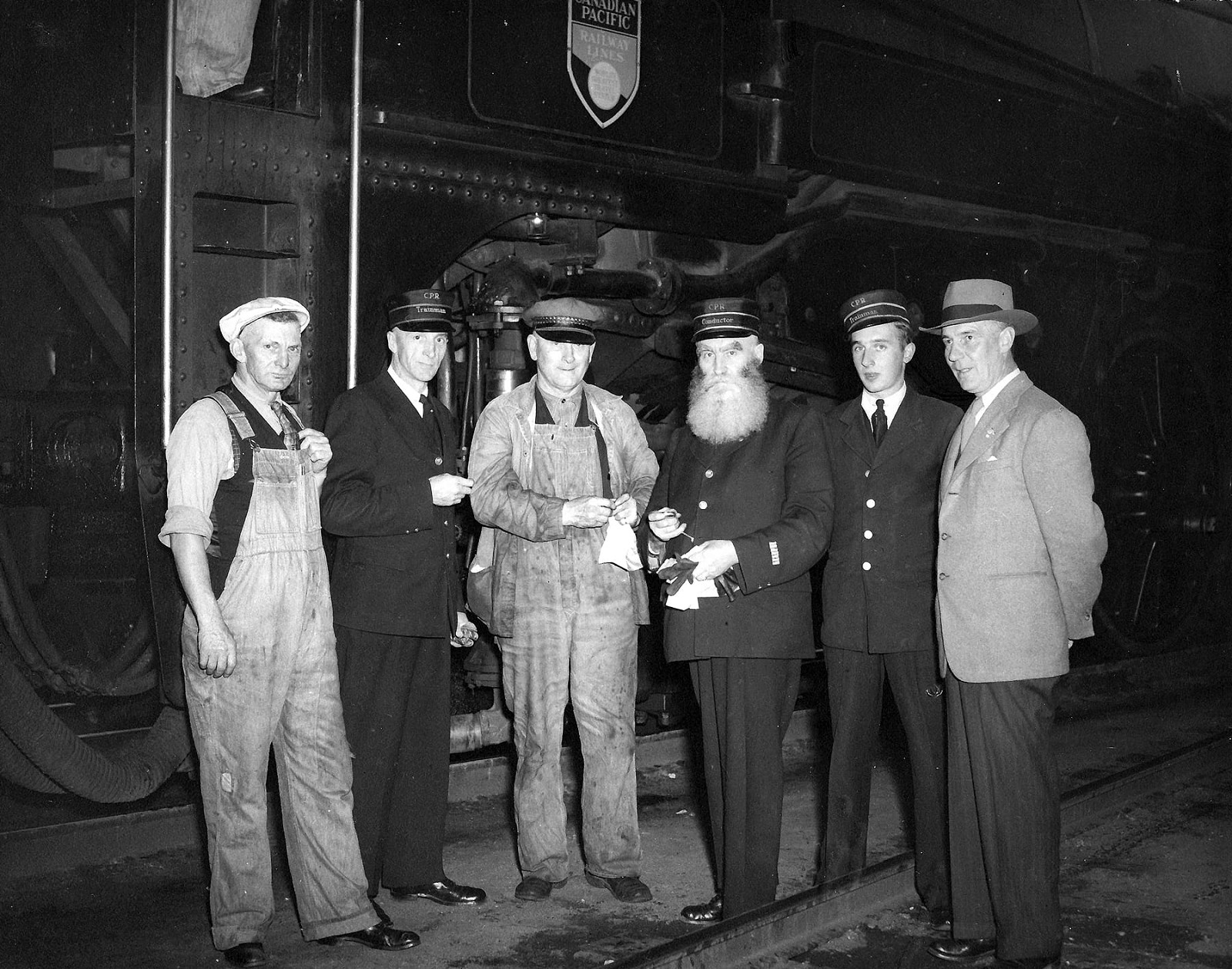
McDonald kept his beard until his retirement day, possibly the first employee to do so. Here he is, concluding his last run on #7 at Revelstoke, 30 August 1944. L to R: Charlie Painting – baggageman, Harry Walmsley – tailend trainman, DP “Dippy” Graham – engineer, Willy J McDonald – conductor, OS “Sinc” Jones – front end trainman, Alex Forbes – assistant superintendent. Jones later made conductor and this picture hung in his personal caboose for many years.
As a young trainman in Revelstoke, my dad’s mentor was a highball conductor named Walter Frisby. Before CTC and two-way radio, a conductor determined the movement of his train by train orders, the timetable, and track signals. An experienced conductor could trim time off a trip by canny use of the watch, timetable and a good head for traffic movements on the division. Crews really liked that because the faster a trip was made, the sooner they made their miles.
Frisby was very good at this and imparted his skills to my Dad and to Jack White, the other trainman on Frisby’s crew (and who later became the CPR’s general manager, operations and maintenance, Pacific Region). After the two trainmen were set up as conductors themselves, a saying on Mountain Subdivision was ‘Go faster than light with Jones and White.’
However, a slow engineer could drag a trip no matter how much strategy a conductor employed, which was thoroughly frustrating for the rest of the crew. One such engineer, long retired at Revelstoke, died. He was famous for his hesitant and sparing use of the throttle which, being overly concerned about the weight behind him, increased with the length of his train.
He would have it crawling at the best of times and often stalled on hills because he was afraid to build speed and momentum ahead of time. The train would then have to ‘double the hill’, greatly increasing the duration of the trip, along with exasperating the crew.
As this old hogger was well known, the funeral was quite large with a long procession from the church to the cemetery. Frisby and Jones were among the pallbearers riding in the car behind the hearse. Frisby sat up front and turned around to say something to the fellows in the back seat. This allowed him to glance out the rear window and to comment: “If the old guy knew how many cars were behind him now, we’d never get to the damn cemetery!”
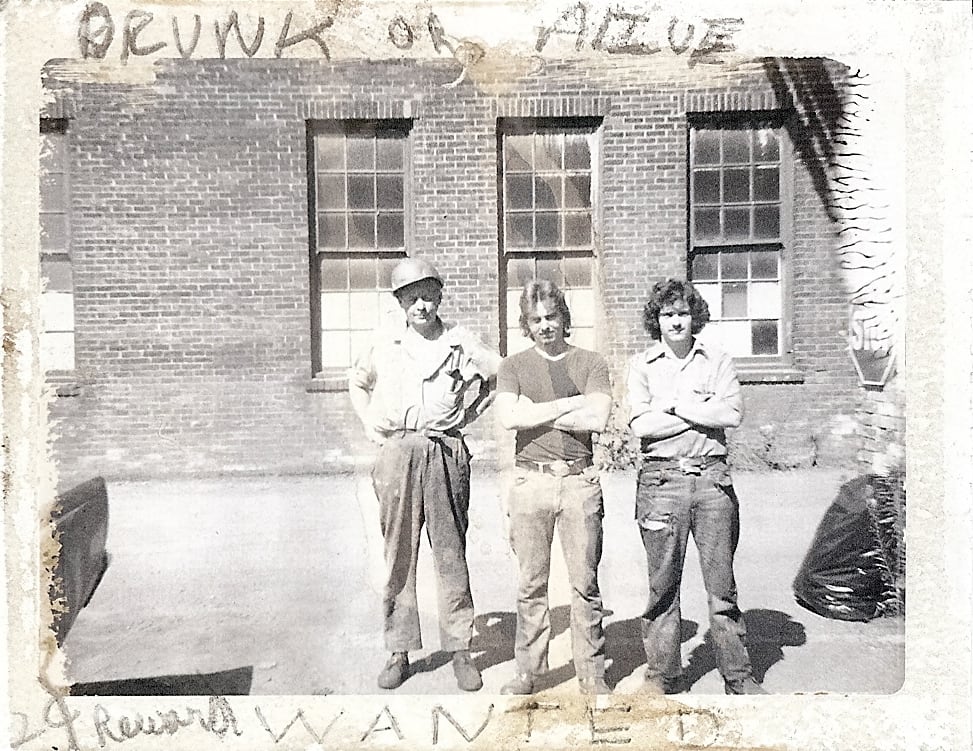
“WANTED: Drunk or Alive.” CP Rail Drake Street shops electrical crew, 1973 (L to R): the late Jack Dillman, Bill Seely, and Andy Cassidy pose like detained desperados. In retrospect, their clothes can be seen as forecasting the fashion style to come in the next decade, called Grunge! Photographer unknown.
In the mid 1960s, CP 2860, ‘The Royal Hudson’, was still privately owned, and was sitting inside our shops looking like it could be fired up anytime. It eventually was, after a minor overhaul. After being disused for so long, considerable effort was spent on the reverser in particular, and it still wasn’t smooth. I’ll always remember that day, as it steamed up behind the oil shed. The pressure test was restricted to 75 psi and it leaked steam all over the place.
Bill Silver, the general locomotive foreman, sat in the big chair and took the controls in hand. He opened the throttle, and away it went. But a problem was soon apparent. A poppet valve broke, jamming it open!
So there he was, going from forward to reverse and back, on a short track, and at the same time opening and closing the throttle in futility, trying to stem the flow of steam to the cylinders. Eventually he applied the brakes and got in the neutral position, killed the fire, and just let it sit there, venting through the cylinder cocks until it cooled off.
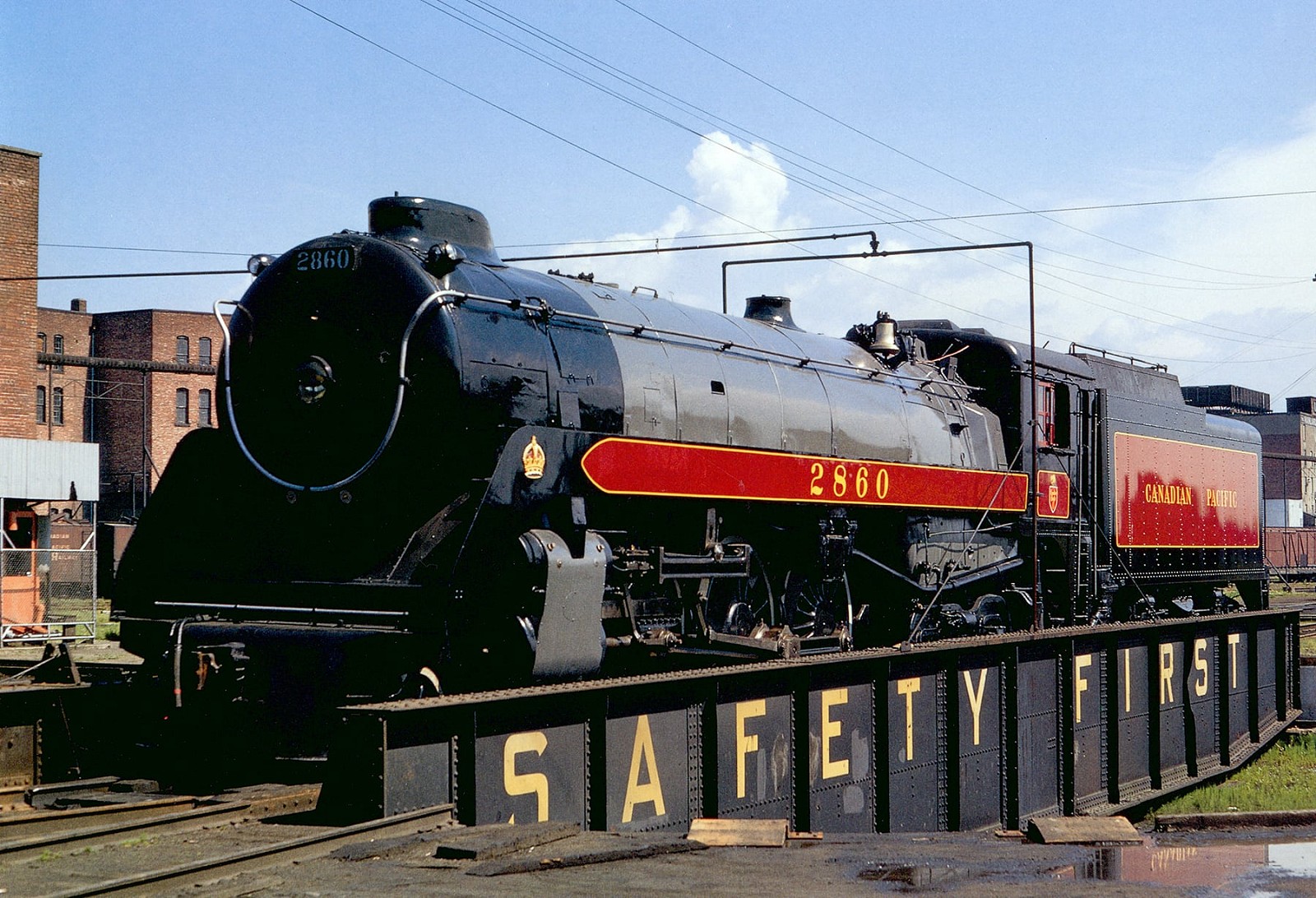
This photo is believed have been taken by the late Peter Cox in the mid ’60s. Cox was an original member of the High Ballers Club (predecessor to the West Coast Railway Museum), and they arranged to have 2860 saved from the scrap line in Winnipeg. It was dragged to Vancouver and stored in the CPR roundhouse until purchased by Joe W Hussey in 1970. He planned to restore it, but ultimately it went to the BC government in 1973, which then made it operational.
Conclusion
Remember the old TV cop show, Naked City? It aired on the ABC network from 1958 to 1963, and always concluded with the voiceover: “There are eight million stories in the naked city. This has been one of them.” Here in this rail precinct, you’ve just heard a few more.
My colleagues and I fondly share the pleasures of our safe railroading careers and the subculture of workplace humour.

Did You Enjoy This Article?
Sign Up for More!
“The Parkin Lot” is an email newsletter that I publish occasionally for like-minded readers, fellow photographers and writers, amateur historians, publishers, and railfans. If you enjoyed this article, you’ll enjoy The Parkin Lot.
I’d love to have you on board – click below to sign up!

